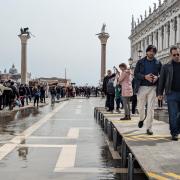
The lack of local tourists visiting the city will cost £3.5 billion this year. The impacts this pandemic has on our community are incremental, and tourism in London may have taken a turn for the worse.
Before the age of coronavirus in 2019, London was teeming with 21 million tourists, but this figure is forecasted to fall by 48% due to lockdown restrictions, and the reluctance to travel into the capital. The reduction in tourism significantly affects employment in this sector, as many firms will have to make employees redundant, due to the fall in demand.
Not only has local interest declined, but the number of foreign tourists has decreased by 77%. This reduces profits for the most popular sites such as the London Eye, as it is more of a novelty for people abroad rather than locals who would generally be interested in more niche attractions.
Since the introduction of the tier 2 lockdown rules, keen tourists have been restricted to travelling in groups of six, and are prohibited from interacting with members of other households. This has resulted in an unfortunate reduction in daily visitors, especially after the gradual relaxation of lockdown throughout the summer. It is unfortunate that tourism must suffer the inevitable consequences of the pandemic, as health remains the priority.
Back in July, the government announced a £10 million “kick-starting” tourism package for small businesses across the whole of England, but this might not have been enough to re-nurture the industry within only one city, let alone the entire nation. The mayor of London, Sadiq Khan, stated that the contraction in the tourist sector suggested that these types of responses were merely a “sticking plaster solution.”
However, tourism is on its road to recovery as attractions are beginning to make compromises between the safety guidelines and the facilitation of visitors. For instance, a wide range of fine-dining restaurants are open to customers, but some have minor time restrictions regarding the length of time you can stay at a table for. Another thriving tourist attraction includes Tulleys Farm, which is outside of London, but you can still enjoy the drive-in cinema or visit the pumpkin farm to make Halloween less dismal than what the pandemic would dictate.
Evidently, tourism shouldn’t be prioritised over healthcare in terms of the government’s financial attention, but a countless number of attractions are working hard to re-create London’s cultural charm, and are not letting tourism collapse at the mercy of COVID-19. The ongoing situation encourages innovation, and triggers businesses to find new ways of promoting tourism and regaining the same levels of profits they once had.





























